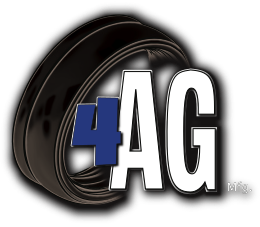How to Master No Till Planting with Closing Wheels
When it comes to efficient farming practices, no till planters have revolutionized the way crops are planted, promoting soil health and minimizing erosion. One key element in ensuring the success of these planters is meticulous attention to closing wheels. Properly aligned closing wheels for no till planters contribute to optimal seed-to-soil contact, leading to improved germination and crop stand. In this guide, we'll break down the essential steps to align and adjust closing wheels, ensuring your no till planter operates at its peak performance.
Achieving Optimal Alignment for No Till Planters
Aligning closing wheels for no till planters is the cornerstone of successful planting. Begin by checking the overall alignment of the planter. Confirm that the planter frame is level and parallel to the ground. Misalignment can lead to uneven seed placement and compromise the effectiveness of closing wheels. Regularly inspect and adjust the planter's hitch to ensure it is in proper alignment with the tractor. This simple step lays the foundation for precision planting.
Ensuring the Centered Path of Closing Tails
The centering of the closing tail is crucial for uniform seed coverage. To achieve this:
Observe the path of the closing tail as it follows the seed furrow.
Adjust the angle of the closing tail if necessary to ensure it centers itself over the seed trench.
Regularly inspect the closing tail for signs of wear and tear. As it constantly interacts with the soil, it's prone to abrasion and degradation.
Replace worn or damaged closing tails promptly to maintain their efficiency in consistently guiding soil back over the seed furrow.
A well-centered closing tail minimizes the chances of soil disturbance, promoting an ideal environment for seed germination. Paying attention to this detail contributes significantly to the success of your no till planting operation.
Consistent Distance Between Closing Wheels for No Till Planters
Precise measurement of the distance between closing wheels is vital for achieving consistent seed depth. Ensure that the wheels are evenly spaced on either side of the seed furrow. Unequal spacing can result in uneven soil compaction and hinder proper seed placement. Regularly measure and adjust the distance between closing wheels to maintain optimal conditions for seed germination. Consistency in wheel spacing enhances the overall performance of closing wheels for no till planters. Regularly inspect the closing springs for signs of wear and tear. Over time, these components may degrade, reducing their effectiveness. Replace worn-out or damaged springs promptly to maintain consistent tension and avoid interruptions in the closing process. If you observe issues such as uneven seed depth or inadequate closure, fine-tune the closing spring tension accordingly. This hands-on approach allows you to make real-time adjustments based on the specific requirements of your planting environment.
Fine-Tuning Closing Spring Tension for Maximum Efficiency
Closing spring tension is a critical factor in achieving the right amount of pressure to close the seed furrow effectively. Inspect the tension of the closing springs regularly and adjust them as needed. Adequate tension ensures that the closing wheels for no till planters maintain proper contact with the soil, preventing air pockets that may hinder seed germination. Incorrect tension can lead to uneven closing, affecting seed-to-soil contact and compromising the success of your no till planting operation.
Optimize Your No Till Planting with 4AG Manufacturing
Revolutionize your no till planting experience by choosing 4AG Manufacturing for top-tier planter tires. Our cutting-edge solutions guarantee extended durability, ensuring your planter tires last longer in the field. Elevate your planting precision and boost efficiency with our innovative technology. Your closing wheels for no till planters deserve excellence!

